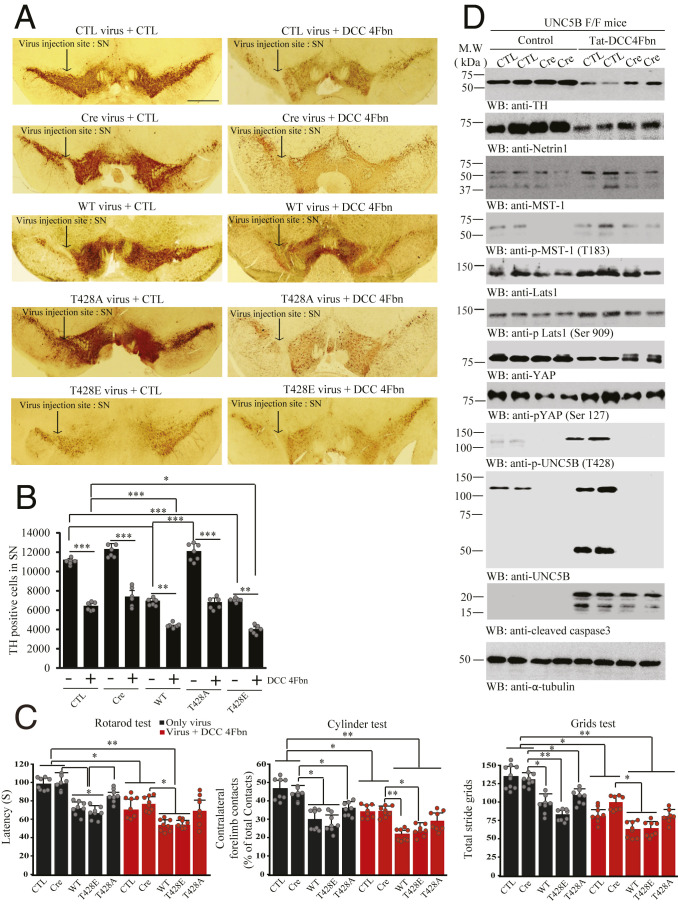Fig. 5.
UNC5B phosphorylation by MST1 is required for dopaminergic neuronal loss and motor dysfunctions. (A) IHC staining of TH in the SN of UNC5B f/f mice. Control virus, Cre virus, or UNC5B WT, UNC5B T428A, or UNC5B T428E virus was injected into the SN of UNC5B f/f mice, followed by treatment with Tat-DCC 4Fbn or vehicle control (i.p.). TH IHC was conducted on the brain sections of SN regions from UNC5B f/f mice. (Scale bar: 2,000 μm.) (B) Quantification of TH-positive cells in the SN. The graph is the stereological counted TH-positive cells; n = 6 each group. (C) Motor behavioral assays. Unphosphorylated UNC5B T428A protected dopaminergic neurons from DCC-4Fbn-induced cell loss as compared to UNC5B WT or T428E; n = 8 per group. Error bars represent the mean ± SEM. Statistical significance was determined using a two-way ANOVA followed by post hoc Bonferroni test for multiple group comparison. *P < 0.05; **< 0.01; ***P < 0.001. (D) Deletion of UNC5B protects DCC-4Fbn-triggered dopaminergic neuronal loss in the SN of UNC5B f/f mice. Immunoblot of TH, NTN1, MST1, p-MST1 (T183), LATS1, p-LATS1 (Ser909), YAP, p-YAP (Ser127), UNC5B, p-UNC5B (T428), and cleaved caspase-3 levels in control (CTL) or Cre virus-injected UNC5B f/f brain (SN) lysate samples. Three independent experiments were conducted in all of the assays.

